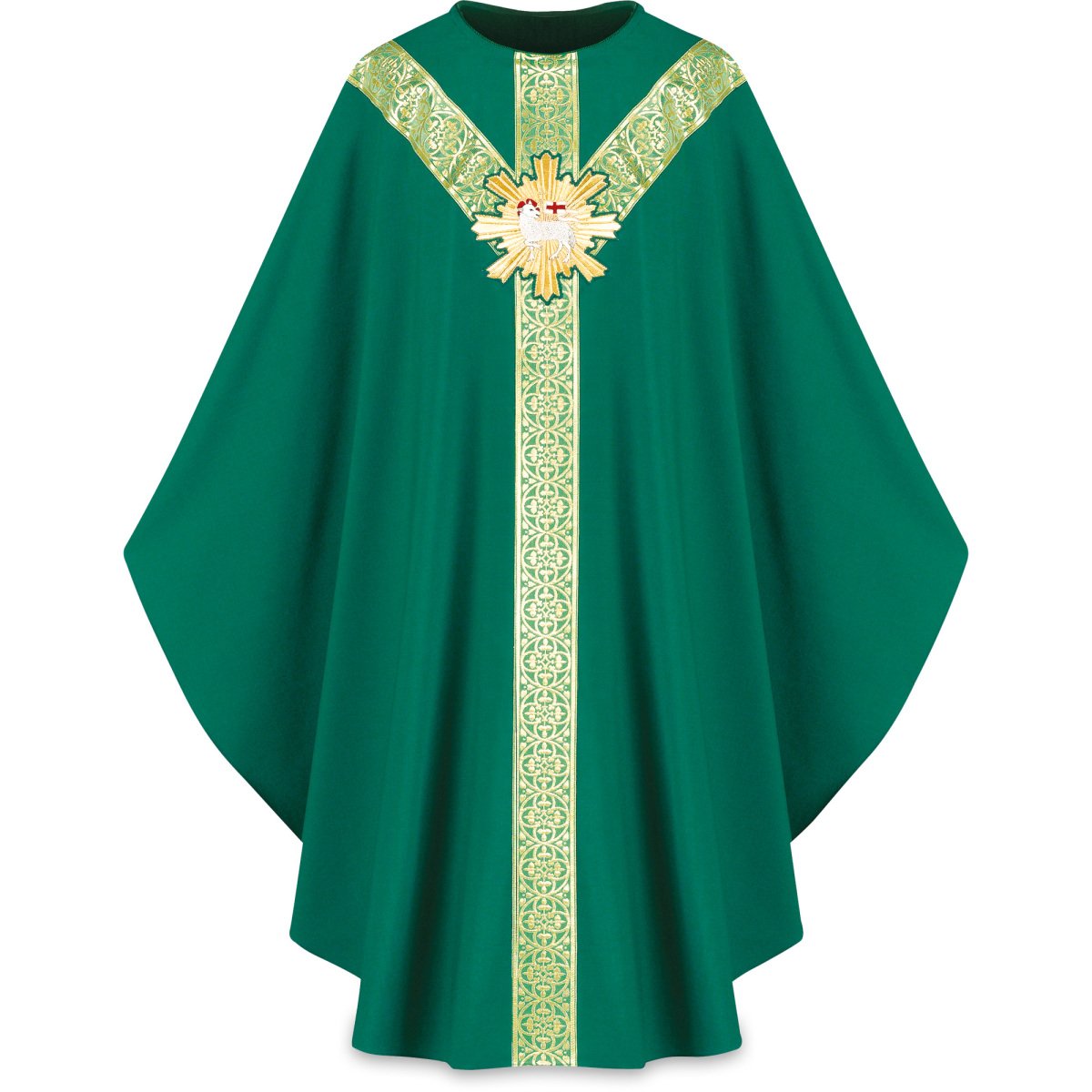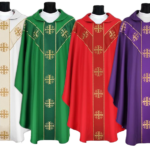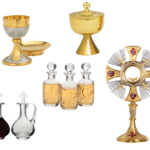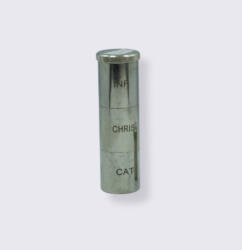Sacramentals are physical objects or actions that have been blessed by the Church and are used to help Catholics deepen their relationship with God and grow in holiness. They are not sacraments in themselves, but they are closely connected to the sacraments and draw their power from them. Sacramentals can take many forms, such as holy water, blessed candles, crucifixes, medals, scapulars, and rosaries.
One of the main purposes of sacramentals is to remind Catholics of their faith and to encourage them to live out their baptismal promises. For example, the use of holy water reminds Catholics of their baptism, where they were cleansed from original sin and became children of God. By making the sign of the cross with holy water, Catholics are reminded of their identity as followers of Christ and are invited to renew their commitment to live as His disciples.
Sacramentals also serve as a means of protection and spiritual warfare. For instance, the use of blessed medals, such as the Miraculous Medal or the Saint Benedict Medal, is believed to invoke the intercession and protection of the saints. Catholics wear these medals as a sign of their devotion and trust in the saints’ intercession in times of need or danger. Similarly, the wearing of the brown scapular, a sacramental associated with the Carmelite order, is seen as a sign of one’s consecration to Mary and a reminder of her motherly protection.
In addition to their symbolic and protective functions, sacramentals are also used as aids to prayer and meditation. The rosary, for example, is a sacramental that helps Catholics meditate on the life, death, and resurrection of Jesus through the repetition of prayers and the contemplation of the mysteries. By praying the rosary, Catholics enter into a deeper communion with Christ and Mary, seeking their intercession and guidance in their spiritual journey. 
Furthermore, sacramentals are often used in liturgical celebrations and devotional practices. For instance, the use of blessed candles during the Easter Vigil symbolizes the light of Christ overcoming the darkness of sin and death. The burning of incense during Mass signifies the prayers of the faithful rising to heaven, as well as the presence of the Holy Spirit. These sacramentals not only enhance the beauty and solemnity of the liturgy but also serve as visible signs of the invisible realities being celebrated.
Overall, sacramentals are an integral part of Catholic spirituality, enriching the faith life of believers and fostering a deeper relationship with God. Through their use, Catholics are reminded of their baptismal call to holiness, protected from spiritual harm, aided in their prayer and meditation, and actively participate in the liturgical life of the Church. Sacramentals are not mere superstitions or magical objects, but rather they are channels of God’s grace, drawing believers closer to Him and helping them grow in their love and knowledge of the faith.
Understanding Sacramentals
Before delving into the use of sacramentals, it is important to understand what they are. Sacramentals are sacred objects, actions, or blessings that are set apart by the Church and used to sanctify various aspects of life. They are not sacraments in themselves but are closely related to them, as they are means of obtaining God’s grace.
Sacramentals can take many forms, including blessed objects like crucifixes, rosaries, medals, holy water, and scapulars. These objects are not mere symbols but are believed to carry a spiritual power that can aid in one’s spiritual journey. For example, a crucifix is not just a piece of jewelry, but a reminder of Christ’s sacrifice and a source of strength and protection.
In addition to physical objects, sacramentals can also be actions that are performed with a specific intention. Making the sign of the cross, for instance, is a common sacramental act that signifies one’s belief in the Holy Trinity and invokes God’s presence and blessing. Participating in processions, such as the Stations of the Cross or the Corpus Christi procession, can also be considered sacramentals as they involve a public display of faith and devotion.
One of the primary purposes of sacramentals is to draw the faithful closer to God and deepen their faith. By using sacramentals, believers are reminded of their connection to the divine and are encouraged to live a more virtuous life. Sacramentals also provide spiritual protection, as they are believed to ward off evil and bring about God’s grace and blessings.
It is important to note that the efficacy of sacramentals does not lie in the objects or actions themselves, but in the faith and disposition of the individual using them. It is the person’s faith and belief in the power of the sacramentals that allows them to be effective instruments of grace.
In summary, sacramentals are sacred objects, actions, or blessings that are set apart by the Church and used to sanctify various aspects of life. They can take the form of blessed objects or specific actions performed with a spiritual intention. Sacramentals serve to draw the faithful closer to God, deepen their faith, and provide spiritual protection. However, their effectiveness relies on the faith and disposition of the individual using them.
Furthermore, sacramentals play a vital role in the spiritual journey of Catholics. They are not only symbols, but also channels through which God’s grace flows into their lives. For example, the use of holy water, a common sacramental, reminds Catholics of their baptism and the cleansing of their sins. As they dip their fingers into the holy water and make the sign of the cross, they are reminded of their commitment to live as children of God and to strive for holiness.
Another important sacramental is the crucifix, which serves as a powerful reminder of Jesus’ sacrifice on the cross. Catholics often wear crucifixes as a visible expression of their faith and as a way to keep their focus on Christ throughout the day. The crucifix reminds them of the immense love that Jesus has for them and the redemption that He offers through His death and resurrection.
In addition to sacramentals that are commonly used in personal devotion, there are also sacramentals that are used in the liturgy of the Church. For example, the use of incense during Mass symbolizes the prayers of the faithful rising up to heaven. The aroma of incense fills the air, creating a sensory experience that helps Catholics to enter into a deeper state of prayer and worship.
Sacramentals also serve as a means of protection and spiritual warfare. For instance, the use of blessed medals or religious medals, such as the Miraculous Medal or the Saint Benedict Medal, is believed to bring about spiritual protection and ward off evil. Catholics wear these medals as a visible sign of their faith and as a way to seek the intercession of the saints.
Overall, sacramentals hold great significance in the Catholic Church. They are not mere objects, but rather powerful tools that aid Catholics in their spiritual journey. Through sacramentals, Catholics are reminded of their relationship with God, the teachings of the Church, and the need for ongoing conversion and holiness. These visible signs of God’s grace and love serve as a constant reminder of the spiritual realities that Catholics hold dear and help them to deepen their connection with God.
The use of sacramentals in daily life extends beyond individual practices and encompasses communal and societal dimensions. In Catholic communities, sacramentals are often integrated into various rituals and traditions that have been passed down through generations. For instance, the blessing of homes during the Feast of Epiphany is a sacramental practice where families invite a priest to bless their homes and pray for protection and blessings for the coming year. This ritual not only strengthens the bond within the family but also fosters a sense of community as neighbors gather to witness and participate in the blessing.
Sacramentals also play a significant role in the sacraments themselves. For example, during the sacrament of marriage, the exchange of rings is a sacramental action that symbolizes the couple’s commitment and love for each other. The use of sacramentals in this context adds depth and meaning to the sacrament, reinforcing the spiritual significance of the vows being exchanged.
Furthermore, sacramentals can be seen as a means of evangelization and outreach. For instance, the wearing of religious jewelry or clothing can serve as a conversation starter, allowing Catholics to share their faith with others. By incorporating sacramentals into their daily lives, Catholics are not only expressing their personal devotion but also inviting others to inquire about their beliefs and practices.
It is important to note that the use of sacramentals should not be seen as superstitious or magical, but rather as a way to deepen one’s relationship with God and the Church. Sacramentals are not meant to replace the sacraments themselves but rather to complement and enhance the spiritual journey of the faithful.
In conclusion, the use of sacramentals in daily life is a multifaceted practice that encompasses personal devotion, communal rituals, sacraments, and evangelization. By incorporating sacramentals into their lives, Catholics are able to express their faith, seek spiritual nourishment, and foster a deeper connection with God and the Church. Whether it be through the use of blessed objects, the practice of prayer, or the participation in liturgical celebrations, sacramentals serve as tangible reminders of the presence of God in our lives and the rich traditions of the Catholic faith.
Furthermore, sacramentals extend beyond the individual sacraments and are present in various aspects of Catholic life. They can be found in the form of objects, actions, or prayers that have been blessed by the Church and hold spiritual significance. These sacramentals serve as reminders of God’s presence and grace in our lives, and they help to foster a deeper connection with the divine.
One common example of a sacramental is the use of holy water. Holy water is blessed by a priest and is often found at the entrances of Catholic churches. As individuals enter the church, they may dip their fingers into the holy water and make the sign of the cross as a reminder of their baptism and a symbol of purification. This simple act of using holy water serves as a sacramental action that prepares individuals to enter into the sacred space of the church and participate in the liturgy.
Another sacramental that is widely used is the crucifix. The crucifix is a cross that bears the image of Jesus Christ. It serves as a visual representation of the central mystery of the Catholic faith – the crucifixion and resurrection of Jesus. The presence of a crucifix in homes, churches, and other places of worship serves as a sacramental reminder of Christ’s sacrifice and the redemption that he offers to all.
In addition to objects, sacramentals can also take the form of actions or prayers. For example, the act of genuflecting before the tabernacle, where the Eucharist is reserved, is a sacramental gesture that expresses reverence and adoration for the real presence of Christ. The recitation of the rosary, a series of prayers that meditate on the life of Jesus and Mary, is another sacramental practice that deepens one’s spiritual life and fosters a closer relationship with God.
Overall, sacramentals play an integral role in the sacramental life of Catholics. They serve as tangible signs of God’s grace and presence, and they help individuals to prepare for and participate more fully in the sacraments. Whether it is the use of blessed objects, the performance of sacramental actions, or the recitation of prayers, sacramentals provide a means for Catholics to engage with their faith on a deeper level and to grow in their relationship with God.





















